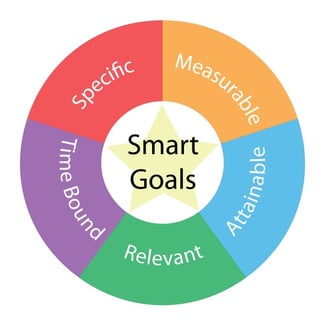 It's pretty well-established that we believe a company's greatest assets are its employees. When productivity runs dry, however, how do you get your employees excited about their roles and the company mission again?
It's pretty well-established that we believe a company's greatest assets are its employees. When productivity runs dry, however, how do you get your employees excited about their roles and the company mission again?
How to improve business efficiency with company-wide learning goals and objectives
Share company goals with the greater team
If you're a reader of our blog, you have likely heard us say that transparency is good for business. Encourage your employees to share the information they're learning, as they can contribute and help your business accomplish its goals. Reflecting and applying new knowledge are both important steps in acquiring new skills. When your employees have an understanding of the company's mission, they will in turn have a better understanding of the direction your business is headed, and what they need to accomplish at an individual level to contribute to growth.
One way to do this is to schedule team meetings regularly. In addition to meeting in-person, consider communicating through email, or via a collaboration tool, such as Office 365. This way, you can boost transparency at a company-wide level, communicate learning goals and objectives, and get everyone on the same page on the company's mission.
Set smart, measurable goals
If you're an entrepreneur, chances are you're continuously searching for new ways to reach for the stars in the business world. But slow down. We recommend breaking your goals down into specific, measurable goals with respect to training. This way your goals won't feel so out of reach, and you can attain them at a much faster, more successful rate. In the words of Jennifer Cohen, in a contribution to Forbes: "Smaller goals that can be achieved over a short time period lend themselves well to motivation."
Say, for example, that you want your employees to become significantly more efficient at daily software tasks. If so, you will need to establish how they will ultimately acquire these skills, how you will measure their success, how it pertains to their individual role and by when the training will be completed.
Great leaders are often defined by their ability to lead by example
Regular one-on-ones can help to create transparency, but that is just scratching at the surface. They also provide you with an opportunity to meet with your team members individually and create learning goals that map back to the company's culture, mission and quarterly initiatives. It's also an opportunity to share your own professional goals with your colleagues. They will have a chance to see what you have accomplished through training and skill-development programs, thus feeling inspired to accomplish their own.
Create a recognition program
Setting goals is one thing, accomplishing them is a whole new ball game. This is especially true when you add training programs to an already busy schedule filled with critical job responsibilities.
To put some motivation behind goal-setting, consider creating a recognition program and offering incentives when your employees complete training. While monetary compensation is not always an option, especially for small businesses, there are a number of small, effective ways to reward your employees. Reward them at a team level with a company-sponsored lunch once a quarter, or consider rewarding employees at an individual level through promotion or added flextime.
Want to learn how some organizations are motivating employees across different learning styles? Watch our video and see how the KnowledgeWave Learning Site provides an effective, affordable corporate training resource that you can add to your program.







